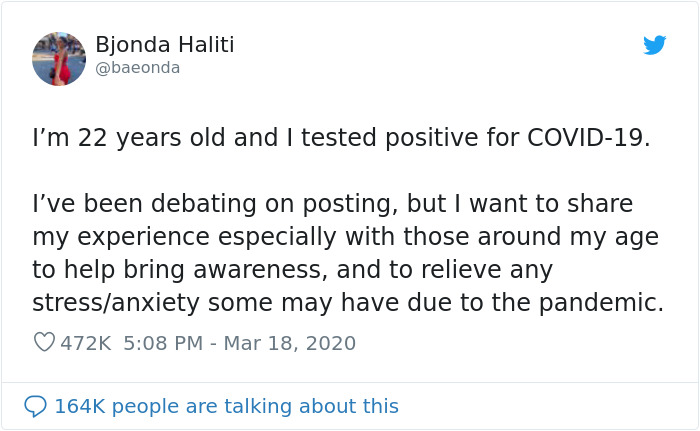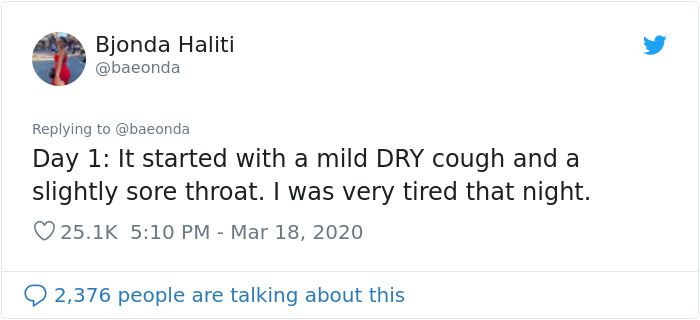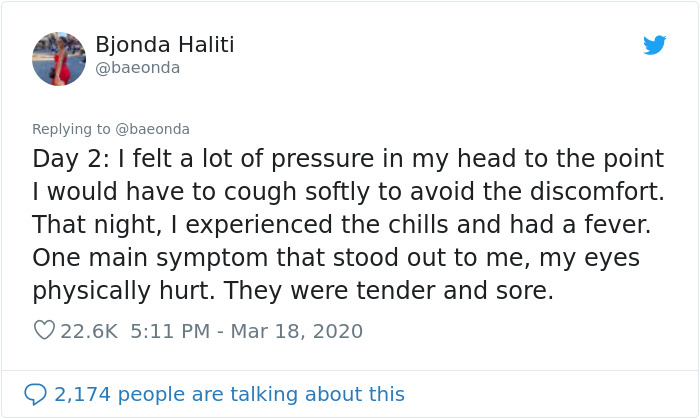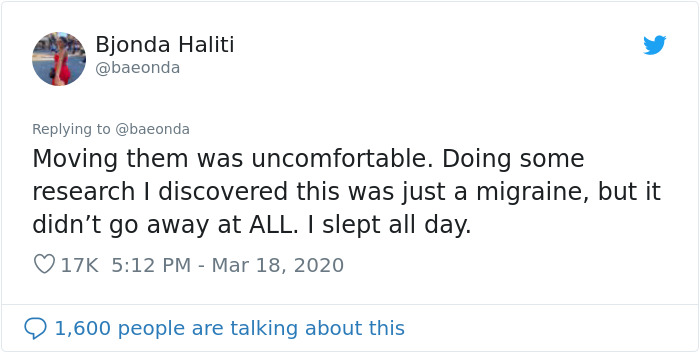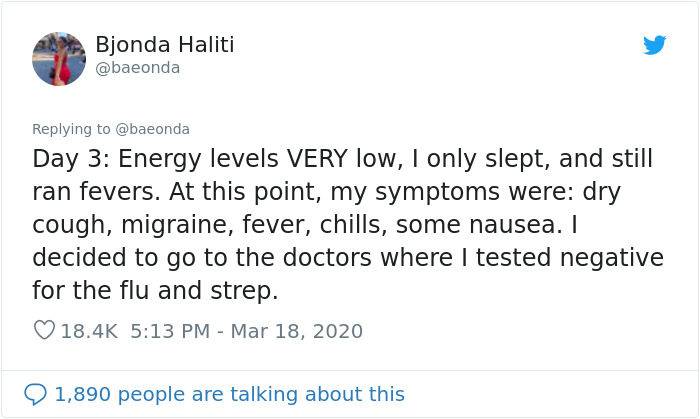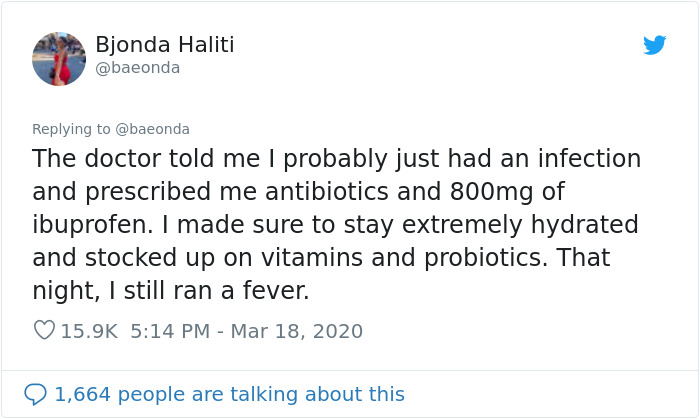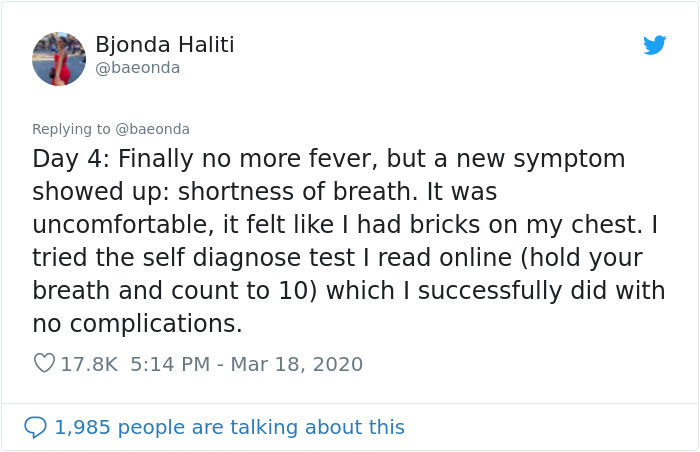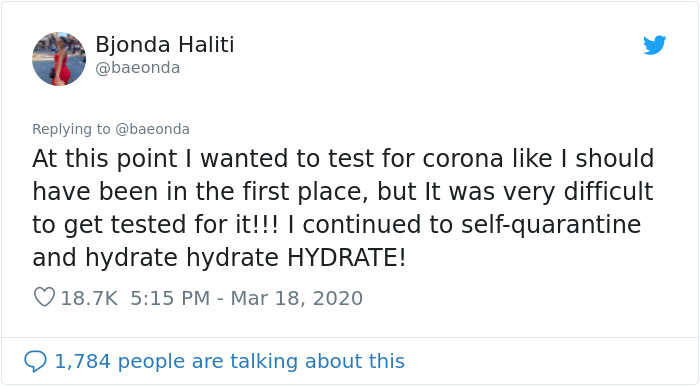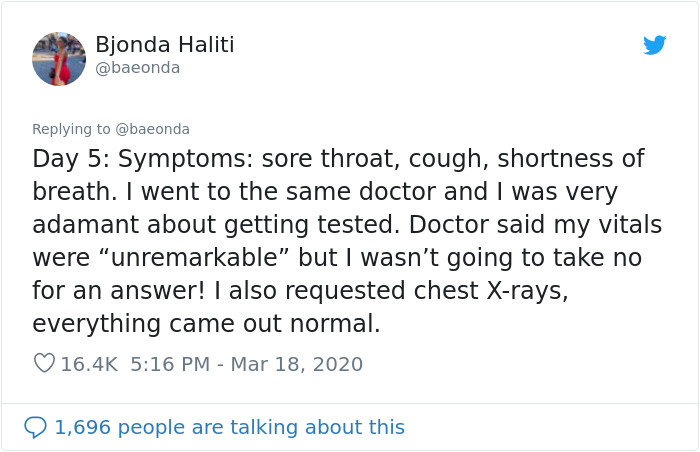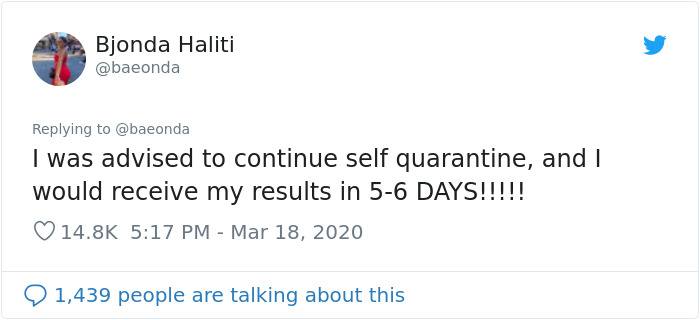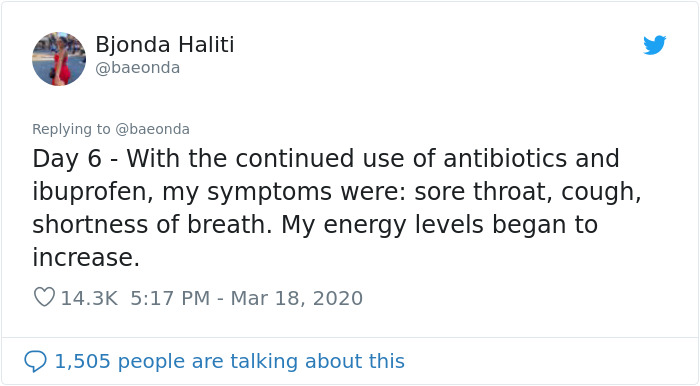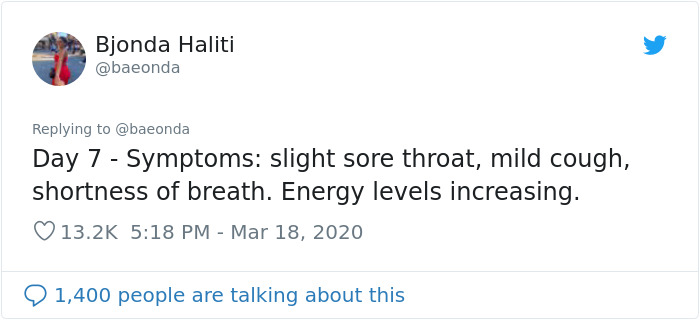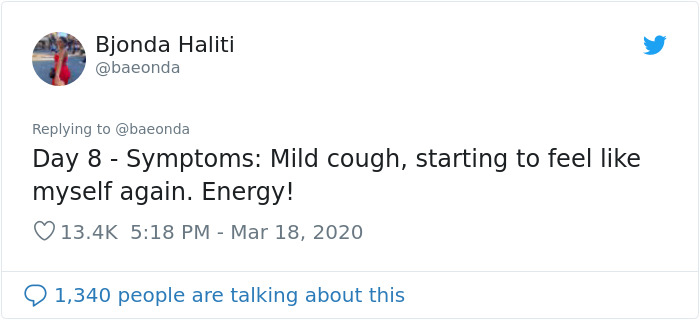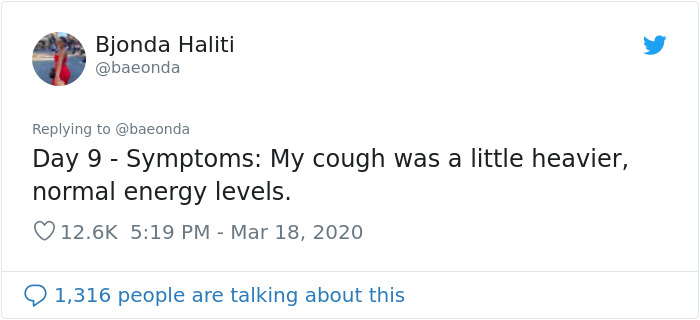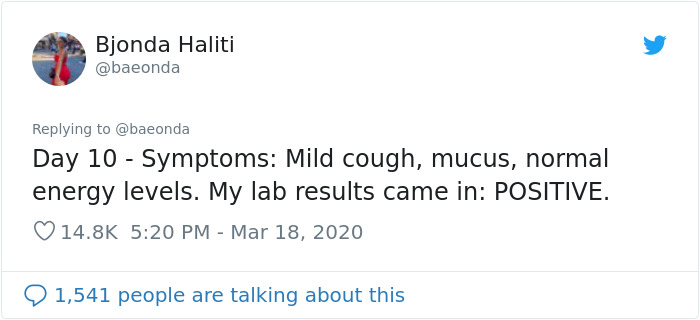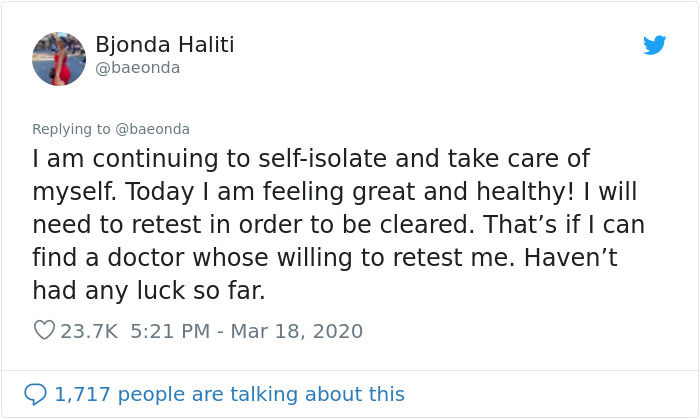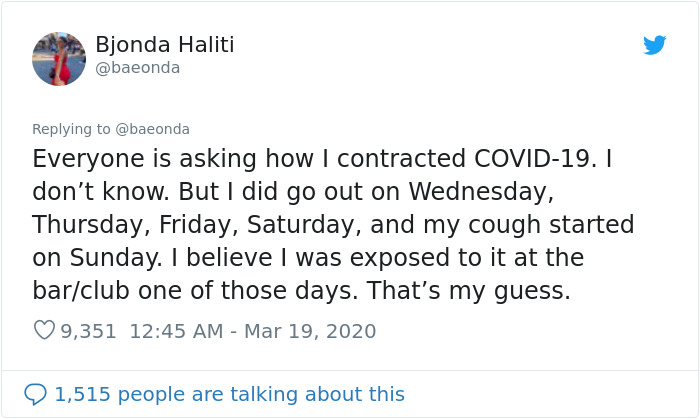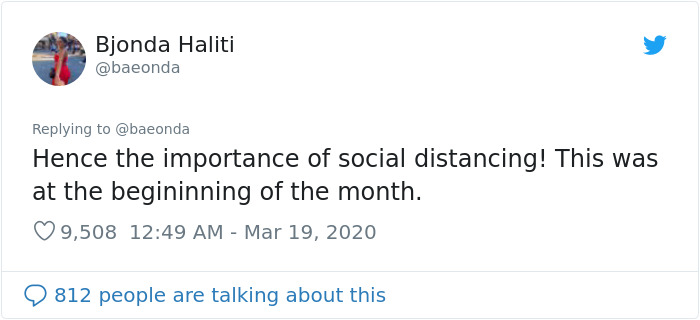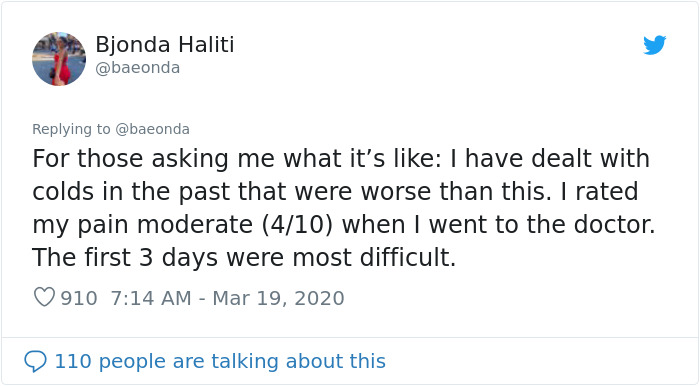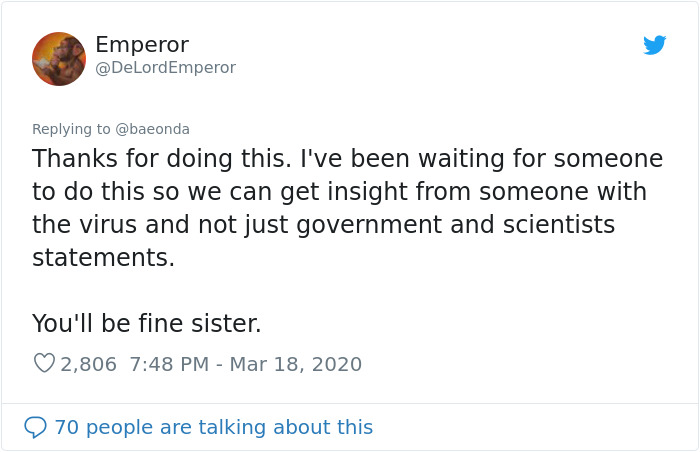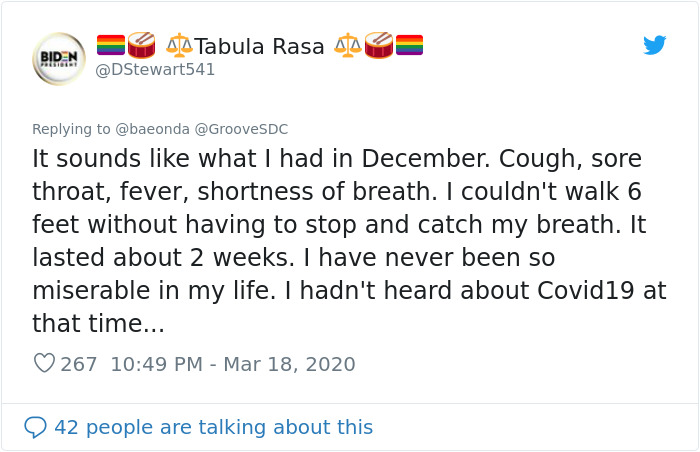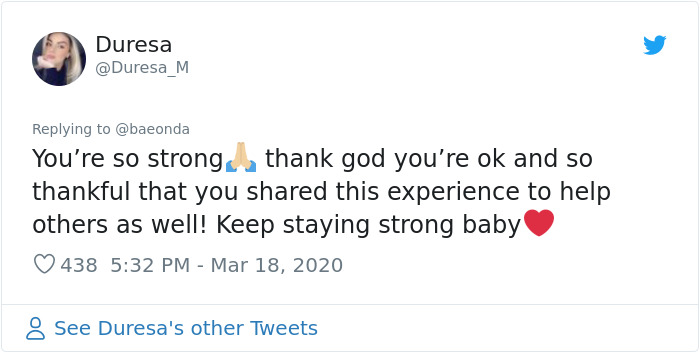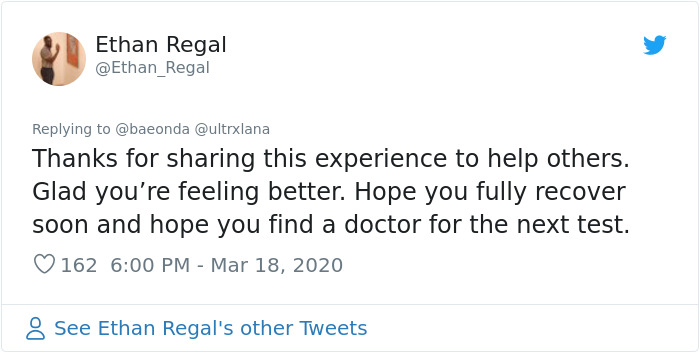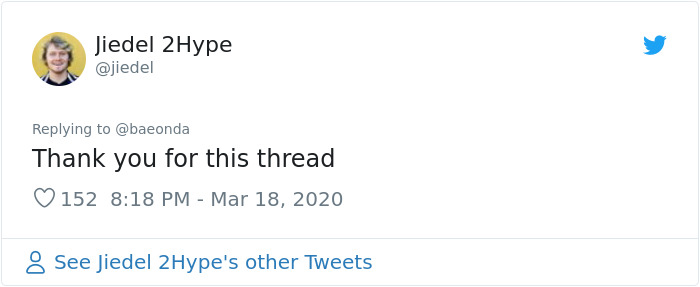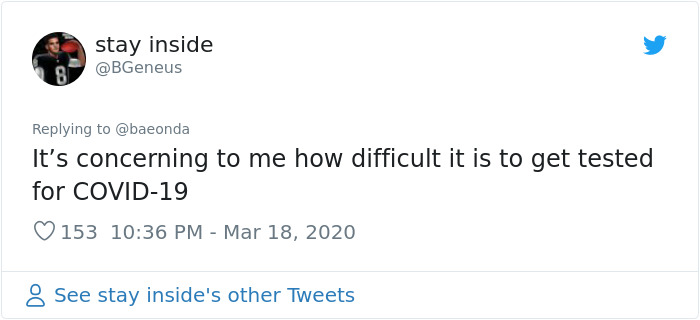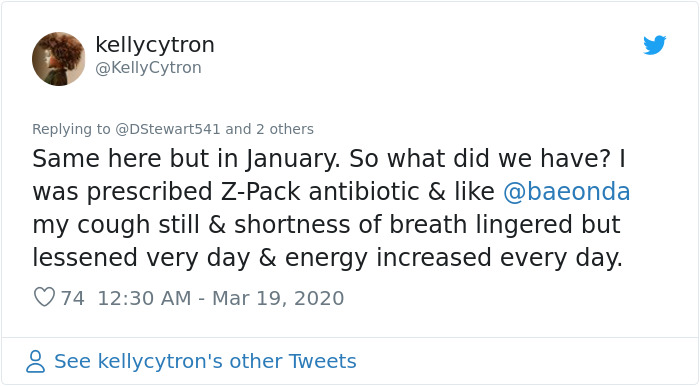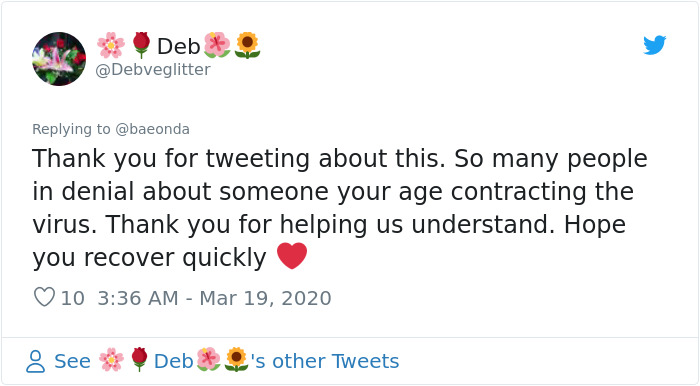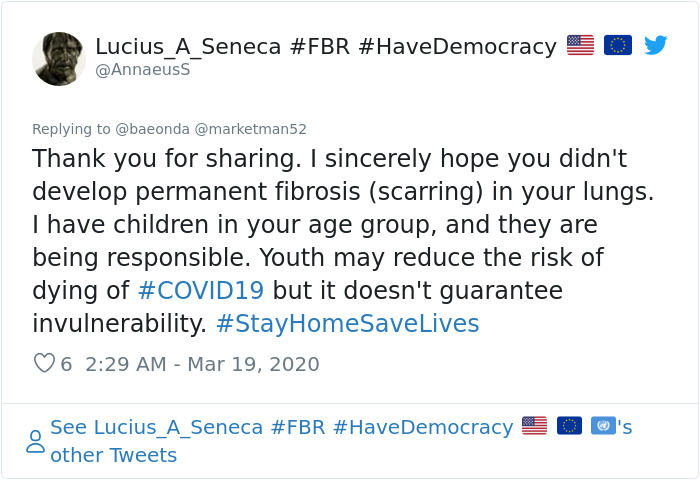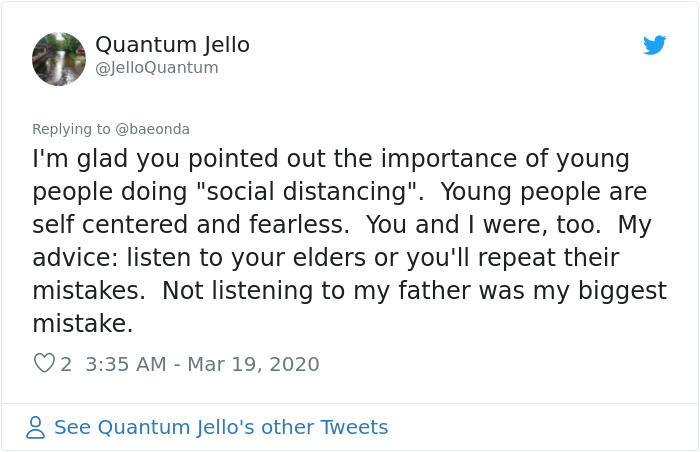Young people tend to consider themselves far removed from coronavirus, especially if they have no underlying health issues. After all, on...
Young people tend to consider themselves far removed from coronavirus, especially if they have no underlying health issues. After all, only 29% of confirmed cases in the United States occurred in persons aged 20–44 years, and of those admitted to an ICU, the same age group made up only 2%–4%. But Bjonda Haliti is a perfect example that the pandemic can creep up on everyone.
Recently, the 22-year-old tested positive for COVID-19. For some time, she doubted whether or not to share her story with the rest of. Eventually, the woman decided to help bring awareness and tweeted out her experience with the virus. In a thread that has since gone viral, Haliti described her symptoms and the actions she took to fight them. Continue scrolling and check out what she has gone through.
Image credits: baeonda
Image credits: baeonda
Image credits: baeonda
Image credits: baeonda
Image credits: baeonda
Image credits: baeonda
At this point in the story, it’s worth mentioning that cybercriminals exploit the coronavirus panic by creating hundreds of fraudulent websites, selling fake information and home test kits to steal people’s data and money. Cybersecurity experts reported that since January more than 4,000 coronavirus-related domains have been registered and about 300 of them are believed to be ‘malicious’ or ‘suspicious’.
Furthermore, when award-winning clinician Faheem Younus debunked some of the myths surrounding COVID-19, he mentioned that the “hold your breath for 10 seconds” test is totally nonsense, too. “Most young patients with coronavirus will be able to hold their breaths for much longer than 10 seconds,” he wrote. “And many elderly without the virus won’t be able to do it.”
Image credits: baeonda
Image credits: baeonda
Image credits: baeonda
Image credits: baeonda
Image credits: baeonda
Image credits: baeonda
Image credits: baeonda
Image credits: baeonda
Image credits: baeonda
Image credits: baeonda
Image credits: baeonda
Image credits: baeonda
Image credits: baeonda
The Centers for Disease Control and Prevention (CDC) stated that illnesses have ranged from mild symptoms to severe illness and death for confirmed COVID-19 cases.
Fever, cough, and shortness of breath may appear 2-14 days after exposure. The CDC advises that people should get immediate medical attention after experiencing emergency warning signs, including bluish lips or face, new confusion or inability to arouse, and persistent pain or pressure in the chest as well as difficulty breathing or shortness of breath.
Those at a higher risk of serious illness from COVID-19 (people who have heart and/or disease, diabetes, and older adults) should contact their healthcare provider early, even if their illness is mild.
Don’t be afraid to ask for help. “We are here to help each other out,” Dr. Lerner reminded us in The New York Times. “Avoid being a do-it-yourselfer when you’re not qualified. Grab some other clear-thinking person to ask what she thinks or what he would do about stockpiling food, or taking that plane trip, or talking to little Billy about what’s going on with grandma in the hospital and his school being closed. You may choose not to follow the advice you seek, but it’s essential to have other perspectives.”
Here’s what people said after reading Bjonda’s story
Image credits: DeLordEmperor
Image credits: DStewart541
Image credits: Duresa_M
Image credits: Ethan_Regal
Image credits: jiedel
Image credits: BGeneus
Image credits: KellyCytron
Image credits: Debveglitter
Image credits: AnnaeusS
